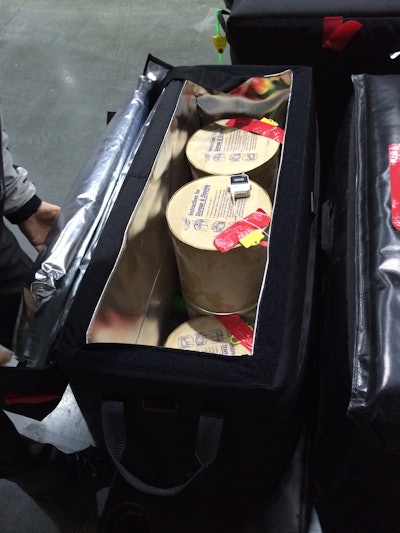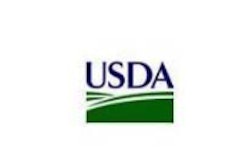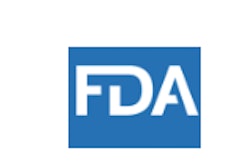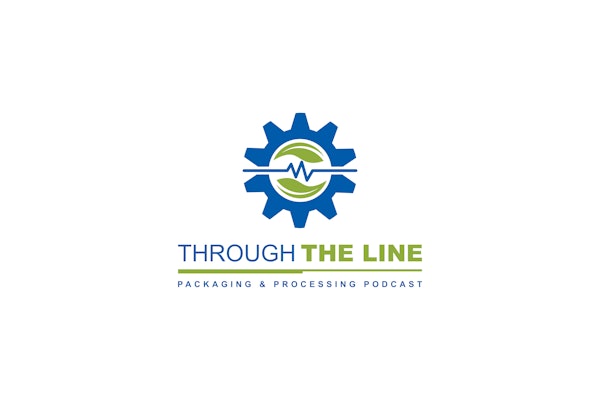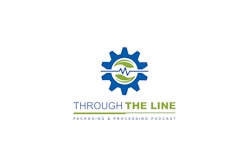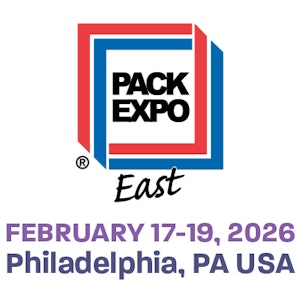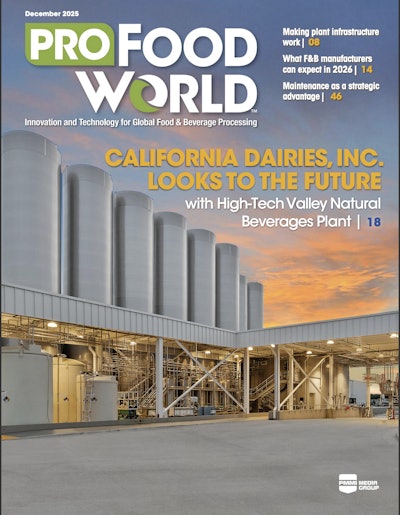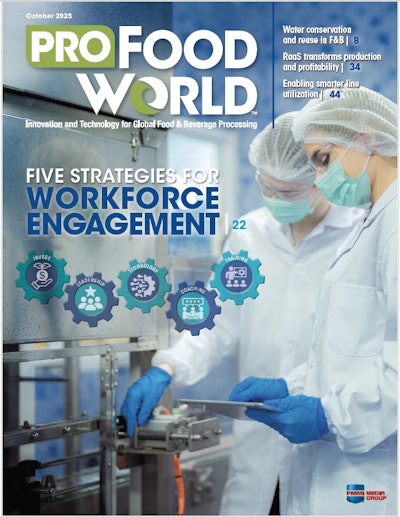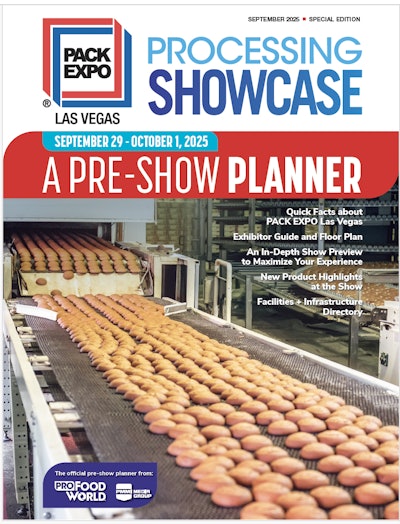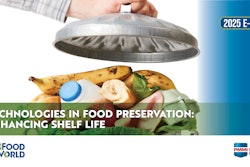PFW: What are the key differences in shipping refrigerated goods in your three key business markets of Pharmaceutical and Life Sciences, Chemical, Paint and Coatings, and Food and Beverage?
Dellumo: Pharma/Life Sciences is our biggest market in terms of sales and use of passive thermal protection at Q Products & Services. Food and Beverage has probably the biggest potential for growth in usage of passive thermal protection due to the massive array of food product types. The types of products being protected vary widely not only between the different product markets we serve but also from product to product within each category. Each temperature-sensitive product has its own unique shipping challenges and specifications, although they are grouped into general categories for the most part, e.g. CRT, 2° to 8°C for pharma and dry, shelf-stable, and perishable within the food and beverage industry.
PFW: What temperature-sensitive needs are new to food companies today?
Dellumo: As influencers like the FDA with the Food Safety and Modernization Act, consumers’ growing awareness of food safety, and the growing trend of e-commerce/home delivery push for more stringent quality control, we are seeing a lot of shippers, distributors, and retailers looking for passive thermal packaging to strengthen their cold chain and supply chain.
Sometimes that means they can substitute passive protection for refrigerated equipment and/or dry ice/coolant gels, which not only equals cost savings but also provides flexibility for their transportation teams and supply chain directors. Especially with driver shortages, refrigerated equipment capacity during high-volume months, and the high rates of refrigerated LTL [less than truckload] shipments. This is mirrored in the pharma world. Because food and beverage companies see protected 2° to 8°C pharma product being shipped dry or without phase-change materials (PCMs), they come in with confidence when looking for a passive solution for their food/beverage products with similar temperature profiles.
PFW: What are the key considerations for e-commerce shipments?
Dellumo: Aside from low price on high volume from a procurement perspective, this type of packaging requires a mix of insulation and PCMs, like a coolant gel, inside of a case or parcel to provide protection against a wide range of potential risk to the product being shipped. These risks could include extreme temperatures or temperature swings, geographic location, handling, vibration, and sensitivity of the product (for example, perishable, shelf-stable, dry goods, or a pharma or healthcare product that requires CRT or 2° to 8°C temperature maintenance).
PFW: What demands do refrigerated products require when shipped via e-commerce?
Dellumo: Because parcel-size shipments mean rough handling from origin to destination for direct-to-consumer shipments, you see a broad range of more volume-priced protective packaging that you might order from a catalog that offers protection for a shorter time frame. Where larger companies like a major produce grower shipping berries direct-to-consumers are coming into that world, they are also in need of customized elements, e.g., the padding from added insulation, to keep the fruit from being pulverized on the way to your front porch.
PFW: Are e-commerce shipments of refrigerated foods really new, or have such products been shipped for many years?
Dellumo: Parcel-sized shipments have been around but have become more specialized. Currently, we are seeing big retail outlets, growers, and manufacturers starting to ship direct-to-consumer via online “order gatherers” like Amazon, Walmart, etc.
PFW: Are there lessons to be learned from refrigerated pharmaceutical shipments that can be applied to shipping food via e-commerce?
Dellumo: They do correlate directly in a lot of ways. On a macro level, when you measure the thermal properties of a bottle, case, pallet, or truckload of cargo you are looking at how that mass interacts with the surrounding environment and how the two affect one another thermally.
Similarly, in comparing food, beverage, pharmaceutical or healthcare products, you are talking about things that people are literally consuming or having a physical interaction with, and that is going to dictate a quality concern resulting in some sort of regulatory compliance and internal quality guidelines. The intricacy of fine chemicals, enzymes, and other ingredients in pharmaceuticals and the way they interact result in very specific sensitivities to temperature, humidity, vibration, etc.
The same goes with combining ingredients in certain foods, shelf-stable and perishable alike. Our finding in having relationships with major food manufacturers is that traditionally they don’t take excess risk. Standard Operating Procedure says put it in a reefer every time no matter what. Well, it turns out that there are a good many shipments that could easily stay within spec without paying to run x-number of refrigerated units year-in and year-out. Passive thermal protection gives them the added peace of mind that if their load does experience a temperature risk, pallet covers, or cargo quilts will maintain the integrity of their product. And food manufacturers do look to big pharma’s acceptance/validation of passive thermal solutions for CRT and 2° to 8°C.
PFW: Are your packouts designed and tested to comply with stringent pharma regulations now being used for produce, dairy, meat, etc.?
Dellumo: There are a variety of parcel-sized packouts that use a range of insulating materials in conjunction with PCM’s, like different temperature ranges of coolant gels, dry ice, etc., that when used inside of a carton or parcel-sized shipper, provide a high level of temperature security. These have been used for years in bio/life sciences and healthcare to ship biologicals, vaccines, cryogenics—which is an extreme example—etc.
This same concept of mixing insulation and PCMs can also be crossed over to shipping smaller amounts of perishable foods, such as meat, produce, and dairy. A good example of this would be for meal delivery kits, where HelloFresh, Blue Apron, etc., are delivering dry, shelf-stable, and perishable goods in one box, directly to consumers.
PFW: We’ve shipped refrigerated and frozen foods through our distribution systems for several decades. How do e-commerce shipments of these foods differ?
Dellumo: The parcel-sized packages that make up most of the orders being delivered direct-to-consumers are shipped by parcel carriers such as FedEx, UPS, and USPS that generally do not offer refrigerated service.
PFW: What regulatory similarities/differences exist between e-commerce shipments of pharmaceuticals versus foods that your company must adhere to?
Dellumo: It’s really the other way around. Our client base is responsible for compliance with food and drug regulations and [they are responsible for] validated shipping solutions via temperature studies, which our Technical Services team specializes in, to uphold the integrity of their products through the cold chain. Q/A groups are a big part of the conversation for both pharma and food companies, and it’s their job to say no to taking on excess risk
